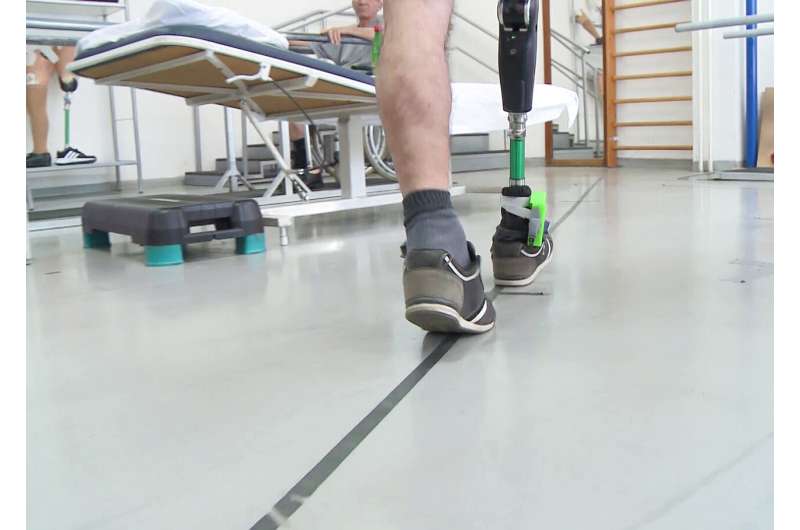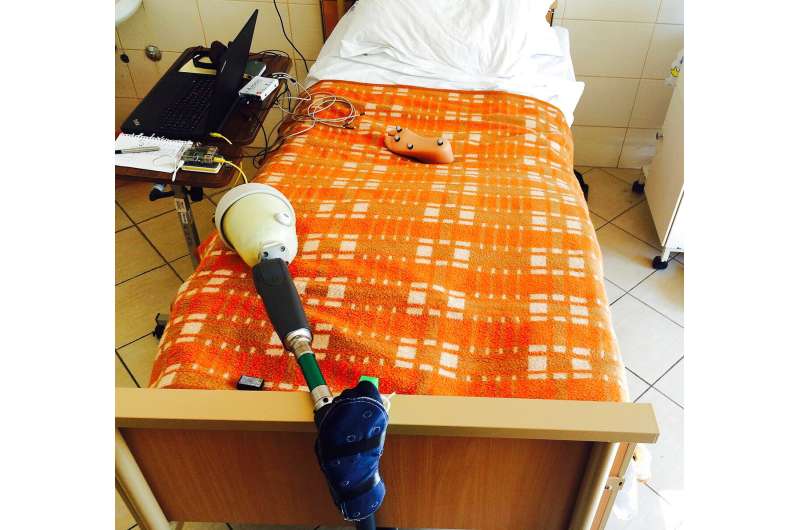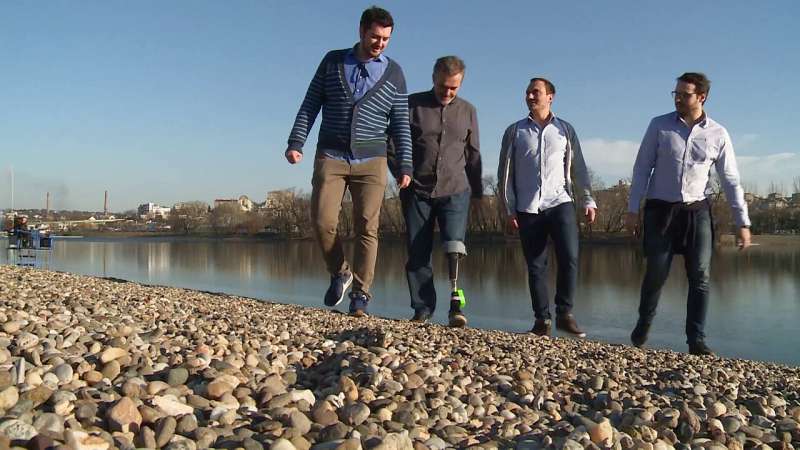Leg amputees feel and use nerve-stimulating leg prosthesis as a real limb

A European consortium led by ETH Zurich and SensArs Neuroprosthetics reports that tiny electrodes implanted in a patients' thigh nerve allow them to feel natural sensations of touch and movement from a prosthesis. Amputees can then walk freely while thinking about activities other than controlling the device. The details of the work were published in Science Translational Medicine and represent a multidisciplinary collaboration among several European institutions.
Djurica Resanovic, one of the volunteers, says, "The first time that I felt my leg, my foot, it was very interesting, like my own leg, after several years." Wearing a blindfold and earplugs, Resanovic could tell where the foot was being touched, or how much the knee was flexed. "I recognized when they touched thumb, heel or foot, anywhere else."
Machine and nervous system connected
A sensorized insole is placed under the prosthetic foot. The signals from the insole and prosthetic knee sensors are translated in impulses of current, the language of the human nervous system, which are delivered to the residual peripheral nerve through tiny electrodes implanted transversally into the nerve itself. Then, the signals from the residual nerves are conveyed to the brain, which is able to perceive what happens at the prosthesis and to adjust the walking accordingly. The machine and the body are connected. Regaining limb awareness allows the subjects to feel obstacles underfoot and to avoid falls.
"We developed the first leg with feelings for highly disabled, above-knee amputees, which enabled them to surpass unexpected obstacles without falling, or to climb stairs much faster. These two tasks are extremely difficult, if even possible, for amputees wearing commercial prostheses," said Stanisa Raspopovic, professor at ETH Zurich.
Amputees feel the prosthesis as a real limb
Leg amputees, while walking, do not trust the prosthesis and rely too much on the healthy leg, reducing mobility. The prosthesis, not being connected with the brain, doesn't feel as a part of their body.

Brain activity measurements and psychophysical tests revealed that the neuroprosthesis is perceived as an extension of the body, as a real limb. The connection between the machine and nerve is fundamental to achieve this.
"You don't need to concentrate to walk, you can look forward and step, you don't need to look where your leg will fall." says Djurica Resanovic, volunteer in the study. "The bionic leg integrated with the residual nerve of amputees enables the brain to accept it as the continuation of the natural leg, and this is essential for higher confidence of the users, and a future widespread of such technology," Raspopovic said.

"An investigation longer than three months, with more subjects, and with in-home assessments should be executed to provide more robust data to draw clinically significant conclusions about an improvement of the health and quality of life of patients," says Francesco Petrini.
More information: F.M. Petrini el al., "Enhancing functional abilities and cognitive integration of the lower limb prosthesis," Science Translational Medicine (2019). stm.sciencemag.org/lookup/doi/ … scitranslmed.aaw3163



















